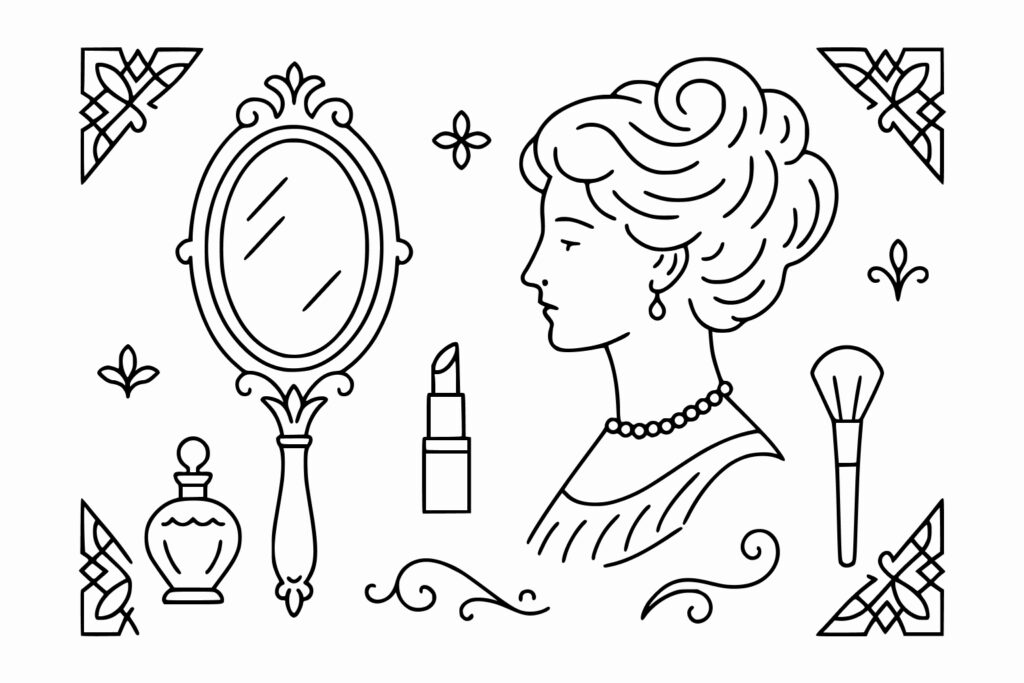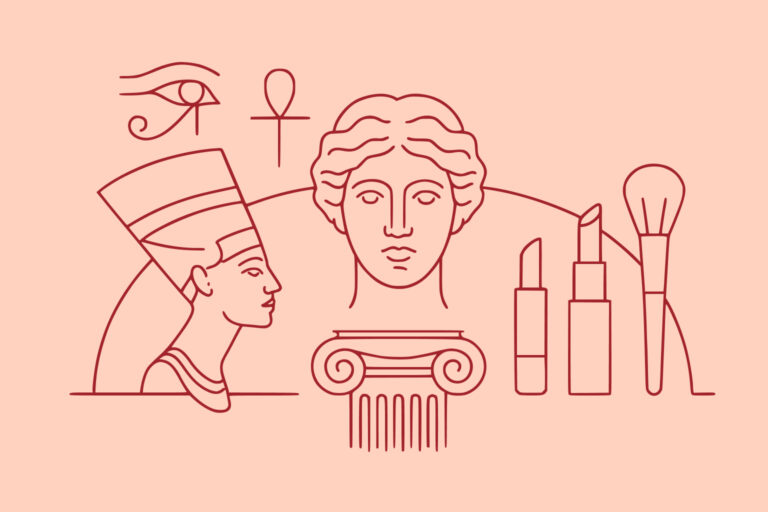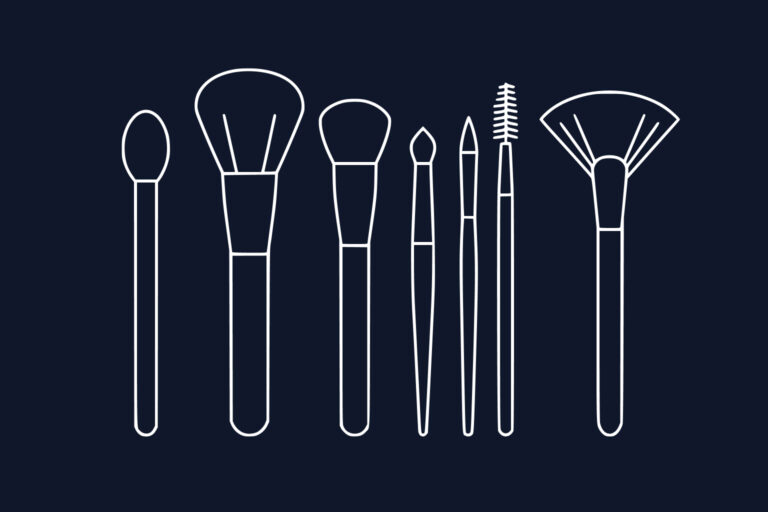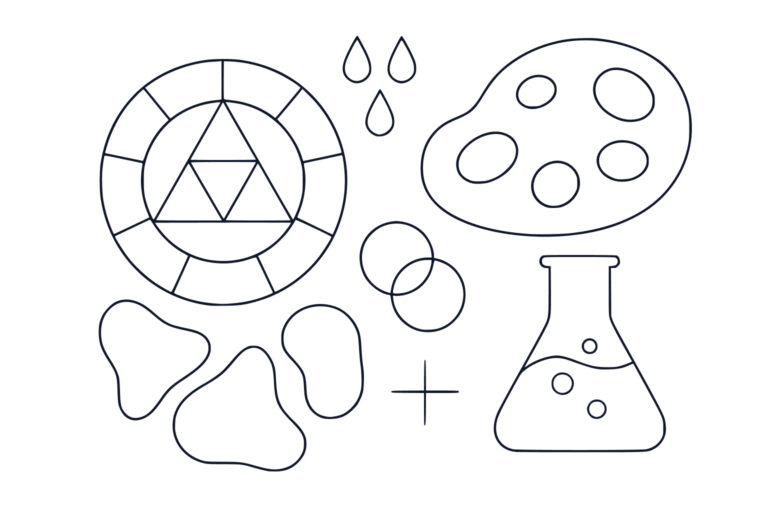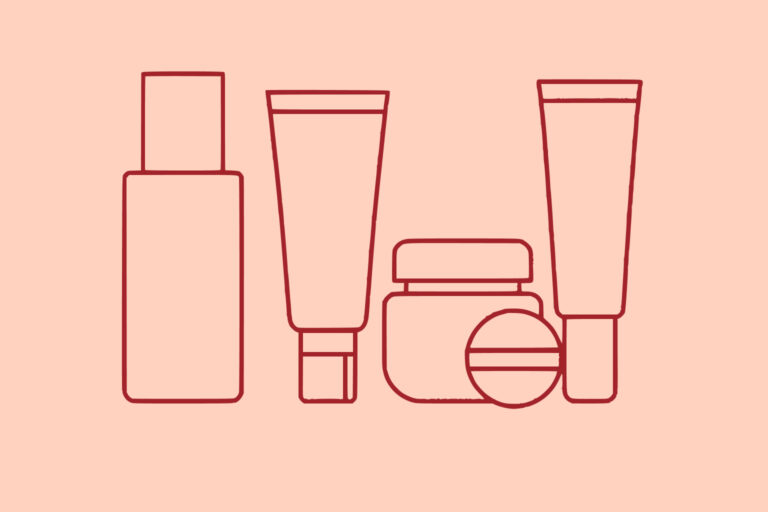Victorian Beauty Secrets: The Hidden World of 19th Century Makeup
Published by Professional Makeup Artist London
The Victorian era, spanning from 1837 to 1901, presents one of the most fascinating contradictions in makeup history. Whilst public morality demanded natural beauty and condemned obvious cosmetic use, a thriving underground world of beauty practices flourished behind closed doors. Victorian women developed sophisticated skincare routines, subtle makeup techniques, and ingenious methods for enhancing their appearance whilst maintaining the illusion of natural, God-given beauty. This hidden world of Victorian beauty reveals the lengths women would go to achieve the era’s demanding beauty standards whilst navigating strict social expectations.
The Victorian Beauty Ideal: Natural Perfection
Victorian beauty standards were defined by an impossible paradox: women were expected to be naturally beautiful whilst secretly working to achieve and maintain that natural appearance. The ideal Victorian woman possessed a complexion like porcelain, lips the colour of rose petals, and an overall appearance that suggested health, virtue, and refinement without any hint of artificial enhancement.
The perfect Victorian complexion was pale, smooth, and luminous, suggesting a life of leisure and refinement. Tanned or weathered skin indicated outdoor labour and lower social status, making pale skin a crucial marker of respectability. The complexion had to appear naturally flawless, without blemishes, freckles, or any signs of aging that might suggest moral or physical weakness.
Facial features were expected to be delicate and refined, with small, rosebud lips that suggested modesty and virtue. Eyes should be bright and clear, framed by naturally long lashes and well-defined brows. The overall effect should be one of youthful innocence combined with mature dignity, a challenging balance that required considerable skill to achieve.
Hair played a crucial role in Victorian beauty, with elaborate styles that demonstrated both fashion awareness and moral character. Hair had to be lustrous, abundant, and styled according to the latest fashions whilst maintaining an appearance of effortless elegance.
The Victorian figure ideal emphasised a tiny waist, full bust, and graceful posture that conveyed both femininity and moral uprightness. This silhouette was achieved through corseting and careful attention to deportment, creating a distinctive Victorian aesthetic that influenced beauty standards for generations.
Understanding these beauty ideals helps modern makeup artists appreciate how cultural values and social expectations have shaped beauty practices throughout history, influencing contemporary approaches to colour selection and application techniques.
The Moral Dilemma: Vanity Versus Virtue
Victorian society created a complex moral framework around beauty and cosmetics that forced women to navigate carefully between the desire for attractiveness and the demands of virtue. This tension shaped every aspect of Victorian beauty culture and created the secretive practices that characterised the era.
Religious and moral authorities of the Victorian era viewed obvious makeup use as deceptive and sinful. The prevailing belief was that God had created women with natural beauty, and attempting to improve upon divine creation was both vain and dishonest. This moral stance created enormous pressure on women to appear naturally beautiful whilst secretly working to achieve that appearance.
The concept of “natural beauty” became a moral imperative, with women expected to embody an ideal that was both effortless and perfect. This impossible standard led to the development of subtle cosmetic techniques designed to enhance appearance whilst maintaining plausible deniability about their use.
Social class played a crucial role in determining acceptable beauty practices. Upper-class women were expected to maintain higher standards of natural beauty, whilst working-class women had more freedom to use obvious cosmetics, though this often marked them as morally suspect.
The theatre and entertainment industry provided a socially acceptable outlet for dramatic makeup use, with actresses and performers allowed to use bold cosmetics as part of their professional roles. This created a clear distinction between respectable women and those in the entertainment industry.
Marriage and social advancement depended heavily on maintaining the appearance of natural beauty whilst actually achieving the demanding Victorian beauty standards. This created a culture of secrecy around beauty practices that influenced how cosmetics were marketed, sold, and used throughout the era.
Secret Skincare: The Foundation of Victorian Beauty
Victorian women developed elaborate skincare routines that formed the foundation of their beauty practices. These routines were often time-consuming and expensive, requiring dedication and resources that demonstrated both leisure and wealth.
The Victorian skincare routine began with thorough cleansing using a variety of preparations designed to remove impurities whilst maintaining the skin’s delicate balance. Popular cleansing methods included milk baths, which were believed to soften and whiten the skin, oatmeal scrubs for gentle exfoliation, and rose water for toning and refreshing.
Cold cream, a mixture of beeswax, oil, and water, became the cornerstone of Victorian skincare. This versatile preparation served as both cleanser and moisturiser, providing the foundation for the smooth, luminous complexion that defined Victorian beauty. Quality cold cream was expensive and often imported, making it a luxury item that signified social status.
Facial masks and treatments were popular among Victorian women who could afford them. These treatments used ingredients like cucumber, egg whites, honey, and various plant extracts to address specific skin concerns. The preparation and application of these treatments became elaborate rituals that occupied significant time and attention.
Sun protection was crucial for maintaining the pale complexion that defined Victorian beauty. Women used parasols, wide-brimmed hats, and even face veils to protect their skin from the sun’s darkening effects. Some also used skin-lightening preparations, though these were often dangerous and could cause serious health problems.
The pursuit of perfect skin led to the use of various treatments and preparations that promised to remove blemishes, reduce signs of aging, and create the flawless complexion that Victorian beauty demanded. Many of these treatments were harsh and potentially harmful, reflecting the lengths women would go to achieve the era’s demanding beauty standards.
Understanding these historical skincare practices provides valuable context for modern approaches to makeup products and skin preparation, showing how the fundamentals of good skincare have remained consistent whilst specific techniques and ingredients have evolved.
Subtle Cosmetics: The Art of Invisible Enhancement
Victorian women mastered the art of subtle cosmetic enhancement, developing techniques that improved their appearance whilst maintaining the illusion of natural beauty. These methods required considerable skill and discretion to execute successfully.
Rice powder became the foundation of Victorian makeup, providing a subtle way to even skin tone and create the desired pale complexion. This fine, translucent powder could be applied lightly to reduce shine and create a smooth, matte finish that appeared natural whilst actually perfecting the skin’s appearance.
Lip colour in the Victorian era had to appear completely natural, leading to the development of subtle tinting techniques that enhanced the lips’ natural colour without obvious artifice. Women would bite their lips or pinch them to create natural redness, or use very light applications of rouge made from natural ingredients like crushed berries or rose petals.
Eye enhancement was achieved through careful grooming rather than obvious makeup. Women would use tiny amounts of kohl or charcoal to darken their lashes, applied so subtly that it appeared to be natural colouring. Eyebrows were carefully shaped and sometimes darkened with burnt cork or other natural materials.
Cheek colour was perhaps the most challenging aspect of Victorian makeup, as it had to appear to be the natural flush of health rather than applied cosmetics. Women developed various techniques for achieving this effect, including gentle pinching, the use of very light rouge applications, and even the consumption of certain foods believed to enhance natural colouring.
The application of these subtle cosmetics required considerable skill and practice. Victorian women had to master techniques that enhanced their features whilst remaining completely undetectable to observers. This level of artistry required understanding of colour, light, and facial anatomy that rivals modern makeup techniques.
Home Remedies and DIY Beauty Preparations
The secretive nature of Victorian beauty culture led to the development of numerous home remedies and do-it-yourself beauty preparations. These formulations allowed women to create their own cosmetics whilst maintaining privacy about their beauty practices.
Homemade face creams and lotions were popular among Victorian women who wanted to maintain their skin without purchasing obvious cosmetic products. These preparations often used ingredients like lanolin, glycerine, and various plant extracts to create moisturising and skin-improving formulations.
Hair care preparations were particularly important in Victorian beauty culture, with women creating elaborate treatments to maintain the lustrous, abundant hair that was essential to the era’s beauty ideal. Popular ingredients included egg yolks for conditioning, beer for shine, and various herbal rinses for colour enhancement and scalp health.
Lip balms and subtle tints were created using beeswax, rose petals, and other natural ingredients that provided moisture and very light colour. These preparations had to be subtle enough to appear natural whilst actually enhancing the lips’ appearance and condition.
Eye treatments focused on maintaining bright, clear eyes and long, dark lashes. Women used various preparations including castor oil for lash growth, cucumber slices for reducing puffiness, and rose water for brightening and refreshing tired eyes.
Perfumes and scented preparations were an important part of Victorian beauty culture, with women creating their own signature scents using flower essences, herbs, and other aromatic ingredients. These personal fragrances became part of their overall beauty presentation whilst remaining socially acceptable.
The tradition of home beauty preparations connects Victorian practices to modern DIY beauty trends, showing how the desire for natural, personalised beauty solutions has remained constant throughout history.
The Rise of Commercial Cosmetics
Despite the moral opposition to obvious makeup use, the Victorian era saw the emergence of a commercial cosmetics industry that catered to women’s beauty needs whilst maintaining social respectability through careful marketing and product positioning.
Early Victorian cosmetic companies had to navigate the moral landscape carefully, marketing their products as health aids or natural beauty enhancers rather than artificial cosmetics. This led to creative advertising that emphasised the natural, healthful properties of beauty products whilst downplaying their cosmetic effects.
Cold cream became one of the first mass-marketed beauty products, with companies like Pond’s establishing brands that would last for generations. These products were marketed as skincare essentials rather than cosmetics, making them socially acceptable for respectable women to purchase and use.
Hair care products were among the most successful early commercial beauty items, as hair health was considered a legitimate concern that didn’t carry the moral stigma associated with facial cosmetics. Companies developed elaborate marketing campaigns around hair tonics, shampoos, and styling products.
The development of department stores in the late Victorian era provided new venues for cosmetic sales, allowing women to purchase beauty products in respectable retail environments. These stores often had dedicated beauty sections that catered to women’s cosmetic needs whilst maintaining social propriety.
Mail-order catalogues became important sources of beauty products for women who couldn’t access urban retail establishments or who preferred the privacy of ordering cosmetics by post. These catalogues often featured elaborate beauty advice alongside product offerings.
The growth of the commercial cosmetics industry during the Victorian era laid the foundation for the modern beauty industry, establishing marketing techniques and product categories that continue to influence how cosmetics are sold and promoted today.
Victorian Beauty Literature and Advice
The Victorian era produced a wealth of beauty literature that provided women with guidance on achieving the era’s demanding beauty standards whilst navigating the moral complexities surrounding cosmetic use. These publications reveal the sophisticated understanding of beauty practices that existed beneath the surface of Victorian society.
Beauty manuals and etiquette books became popular sources of advice for Victorian women seeking to improve their appearance within socially acceptable bounds. These publications often disguised cosmetic advice as health guidance, providing detailed instructions for skincare, hair care, and subtle enhancement techniques.
Women’s magazines began to include beauty advice and product recommendations, though this content had to be carefully presented to avoid moral criticism. These publications often featured articles on natural beauty enhancement, health and hygiene, and fashion that indirectly provided cosmetic guidance.
Medical and health publications sometimes included beauty advice, particularly regarding skincare and hair care. This medical framing made beauty information more socially acceptable whilst providing women with detailed guidance on maintaining and improving their appearance.
Recipe books and household guides often included beauty preparations alongside cooking and cleaning instructions, normalising the creation and use of homemade cosmetics as part of domestic management rather than vanity.
The advice literature of the Victorian era reveals the sophisticated understanding of beauty practices that existed within the constraints of social morality. These publications provided women with the knowledge they needed to achieve Victorian beauty standards whilst maintaining social respectability.
Health Consequences and Beauty Dangers
The pursuit of Victorian beauty ideals often came with serious health consequences, as women used dangerous ingredients and practices in their quest for the perfect appearance. Understanding these risks provides important context for the evolution of cosmetic safety and regulation.
Lead-based cosmetics, inherited from earlier eras like the Tudor period, continued to be used by some Victorian women despite growing awareness of their dangers. These products promised the pale complexion that defined Victorian beauty but caused serious health problems including lead poisoning, skin damage, and premature death.
Arsenic-based preparations were sometimes used for skin whitening and blemish removal, despite their obvious toxicity. The desire for perfect skin led some women to risk their health with these dangerous treatments, often with tragic consequences.
Corsetry, whilst not strictly a cosmetic practice, was essential to achieving the Victorian figure ideal and often caused serious health problems including organ displacement, breathing difficulties, and skeletal deformation. The pursuit of the tiny waist that defined Victorian beauty came at a significant physical cost.
Hair treatments and styling practices sometimes involved dangerous chemicals and extreme heat that could cause hair loss, scalp damage, and burns. The elaborate hairstyles that were essential to Victorian beauty often required harsh treatments that compromised hair health.
The use of unregulated cosmetic ingredients led to various skin problems, allergic reactions, and other health issues. The lack of safety testing and ingredient regulation meant that Victorian women often served as unwitting test subjects for dangerous beauty preparations.
These health consequences highlight the importance of modern cosmetic safety regulations and testing procedures that protect consumers from the dangers that Victorian women faced in their pursuit of beauty.
Legacy and Influence on Modern Beauty
Victorian beauty practices and ideals continue to influence modern makeup and beauty culture in numerous ways, from specific techniques and products to broader attitudes about natural beauty and enhancement.
The Victorian emphasis on natural-looking enhancement has evolved into contemporary “no-makeup makeup” trends that seek to perfect the appearance whilst maintaining the illusion of effortless beauty. This approach to makeup application draws directly from Victorian techniques for subtle enhancement.
Modern skincare routines often reflect Victorian principles of thorough cleansing, moisturising, and protection, though with safer and more effective ingredients. The Victorian understanding of skincare as the foundation of beauty continues to influence contemporary beauty practices.
The Victorian development of commercial cosmetics laid the groundwork for the modern beauty industry, establishing marketing techniques, product categories, and retail practices that continue to shape how cosmetics are sold and promoted.
Contemporary interest in natural and organic beauty products reflects Victorian preferences for plant-based ingredients and homemade preparations, though modern formulations benefit from scientific understanding that wasn’t available in the 19th century.
The Victorian tension between natural beauty and artificial enhancement continues to influence modern beauty culture, with ongoing debates about authenticity, self-expression, and the role of cosmetics in women’s lives.
Understanding Victorian beauty practices provides valuable context for modern makeup application techniques and helps contemporary makeup artists appreciate the historical foundations of their craft.
Recreating Victorian Beauty Today
For modern makeup enthusiasts interested in recreating Victorian beauty looks, it’s possible to achieve the aesthetic using safe, contemporary products and techniques that capture the essence of 19th-century elegance.
To achieve the characteristic Victorian complexion, modern makeup artists can use light-coverage foundation in a shade slightly lighter than the natural skin tone, translucent powder for a matte finish, and subtle highlighting to create the luminous quality that defined Victorian beauty. The goal is to create a porcelain-like appearance that appears natural and effortless.
Victorian-inspired lip looks can be created using nude or very light pink lipsticks applied to create a small, defined mouth shape. The lips should appear naturally coloured rather than obviously made up, requiring careful application and blending to achieve the subtle enhancement that characterised Victorian beauty.
For authentic eye makeup, use brown mascara very sparingly to define the lashes, avoid obvious eyeshadow colours, and focus on creating bright, clear eyes through good skincare and subtle enhancement. The eyebrows should be well-groomed but appear natural, without obvious filling or shaping.
Modern recreations of Victorian beauty benefit from understanding both historical techniques and contemporary safety standards, allowing for authentic aesthetics without the health risks that Victorian women faced.
Conclusion
The hidden world of Victorian beauty reveals a fascinating chapter in the history of cosmetics and self-enhancement. Despite public moral opposition to obvious makeup use, Victorian women developed sophisticated beauty practices that allowed them to achieve demanding beauty standards whilst maintaining social respectability.
The Victorian era’s emphasis on natural beauty, combined with the reality of extensive beauty practices, created a culture of secrecy and subtlety that influenced makeup techniques for generations. The period’s innovations in skincare, subtle enhancement, and commercial cosmetics laid important foundations for the modern beauty industry.
Understanding Victorian beauty practices enriches our appreciation of contemporary makeup culture and helps us recognise the ongoing tension between natural beauty and artificial enhancement that continues to shape beauty standards today. The Victorian legacy reminds us that the pursuit of beauty has always involved complex negotiations between personal desire, social expectations, and moral considerations.
As we continue to develop new beauty products and techniques, the lessons of the Victorian era remind us to balance innovation with safety, enhancement with authenticity, and personal expression with social responsibility. The hidden world of Victorian beauty continues to offer valuable insights for modern makeup artists and beauty enthusiasts seeking to understand the rich history of cosmetic artistry.
